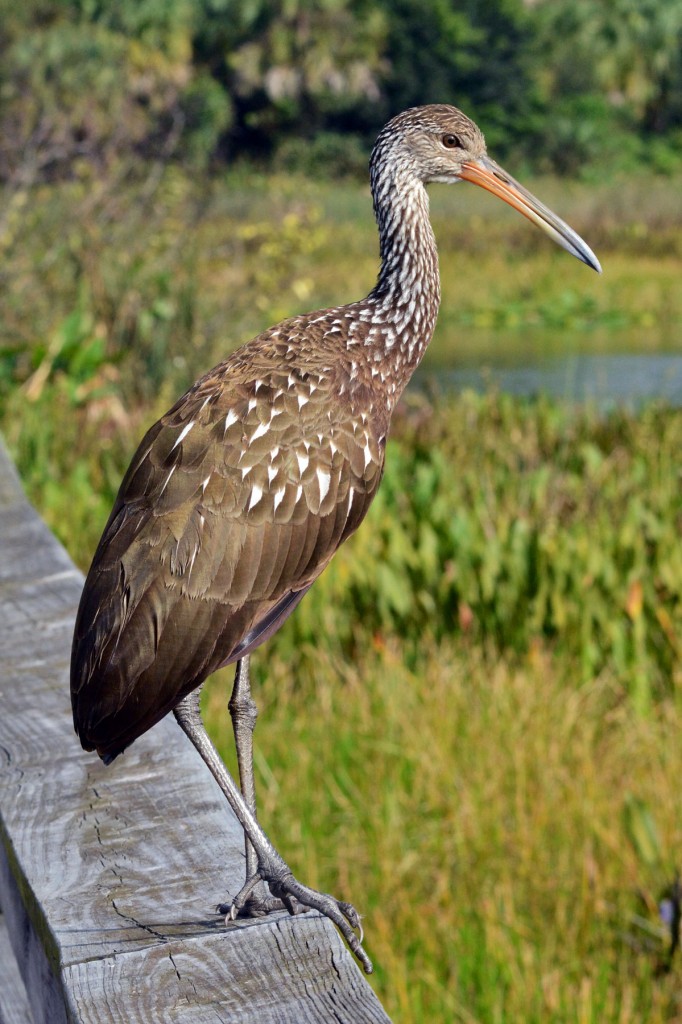Every Saturday after Thanksgiving for the last several years I’ve led the local Audubon Society’s field trip to one of the constructed wetlands in central Palm Beach County: Green Cay. It’s always fun to visit there because the birds know that the people never leave the boardwalk so they’re very tame. Photographers, well aware of this phenomenon, crowd the boardwalk every day of the year. And even those of us who have decent gear but will never be more than a snapshot artist can get a decent snapshot now and then:

In this case, the bird is Podilymbus podiceps, the Pied-billed Grebe. It’s a small water bird with lobed feet that enable it to swim incredibly well, but their position so far aft makes the bird clumsy, at best, on those rare occasions when it ventures on land.
Speaking of clumsy birds, another marsh bird has such an awkward gait that it made it into its common name: Limpkin. These are the birds with the astonishingly loud voice; whenever you hear a jungle bird from a Hollywood movie of the pre-Internet era, it was probably this bird. And they too are quite tame at Green Cay:

Etymology
Pied-billed Grebe (Podilymbus podiceps). Although the picture doesn’t show it because this bird is in its winter plumage, in breeding plumage there is a black ring around the tip of the otherwise grayish-silver bill, which explains the common name for this grebe. The generic name is a combination of two genera that both mean “grebe”: Podiceps and Colymbus. The former is a current name for another genus of grebe (in North America, the Horned, Red-necked, and Eared), while the latter is a former name for a genus that comprised the grebes and loons.
Limpkin (Aramus guarauna). The common name derives from its awkward gait (limp) plus the diminutive -kin, while the taxonomic name is a bit more of a mystery. Aramus is rarely credited authoritatively, although Holloway (2003) cites the Oxford Greek-English Lexicon derivation of Greek aramos as a form of herodios, heron, and then specifies that the species name comes from “the Spanish name of the region inhabited by the Guarauna (Warrau) Indians in Venezuela, where this bird is abundant.”
References
Holloway, J. E. (2003). Dictionary of Birds of the United States. Boston: Timber.
